Abstract
1. The intramuscular oxygen partial pressure (pO2) in human gastrocnemius muscle was monitored during exercise and compared with metabolite concentrations reflecting the energy and the redox state in the tissue. Ten normal subjects and ten patients with peripheral vascular occlusive disease were investigated. 2. In normal subjects the pO2 at the end of exercise was related to the intensity of the exercise, expressed as effect (J/s) per contraction. 3. In both patients and normal subject the pO2 was related to the [ATP]/[ADP] ratio, the [lactate/[pyruvate] ratio and the phosphocreatine concentration in the muscle tissue at rest and during exercise. 4. At each pO2 value, a lower [lactate/[pyruvate] ratio was found in the muscle tissue of the patients compared with that of normal subjects. This was interpreted as a beneficial effect of the higher oxidative-enzyme capacity in the muscle of the patients. 5. The results show the importance of pO2 for the regulation of the energy and the redox state of the tissue. During exercise the changes induced in pO2 and thus the energy state will stimulate the respiratory rate. This might be an important link in triggering the oxidative-enzyme capacity in response to physical training as well as in peripheral vascular occlusive disease.
Full text
PDF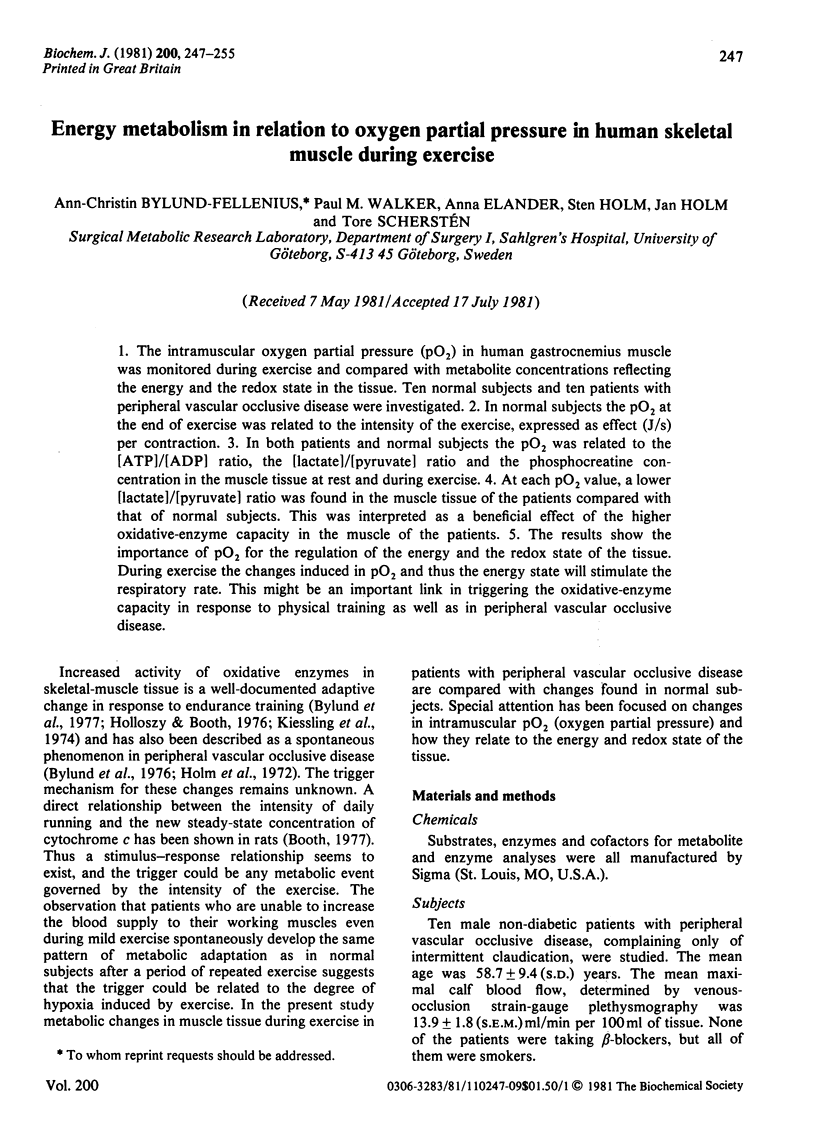
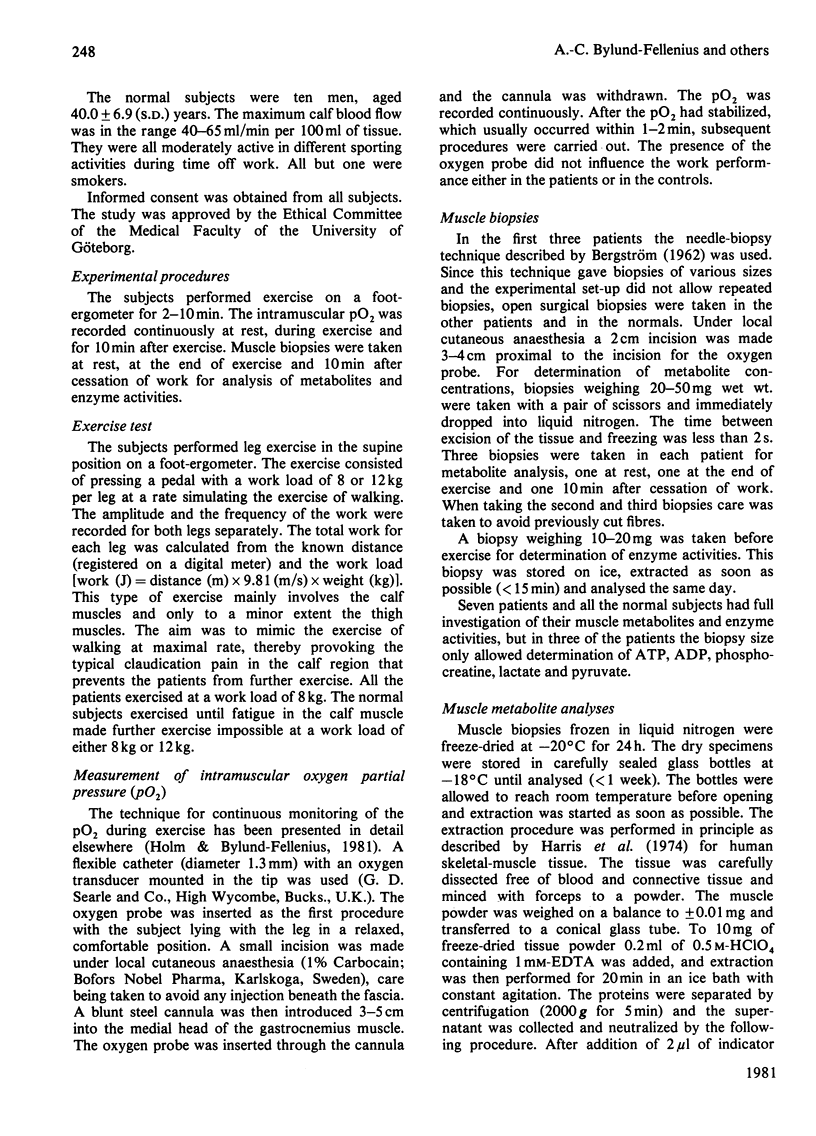
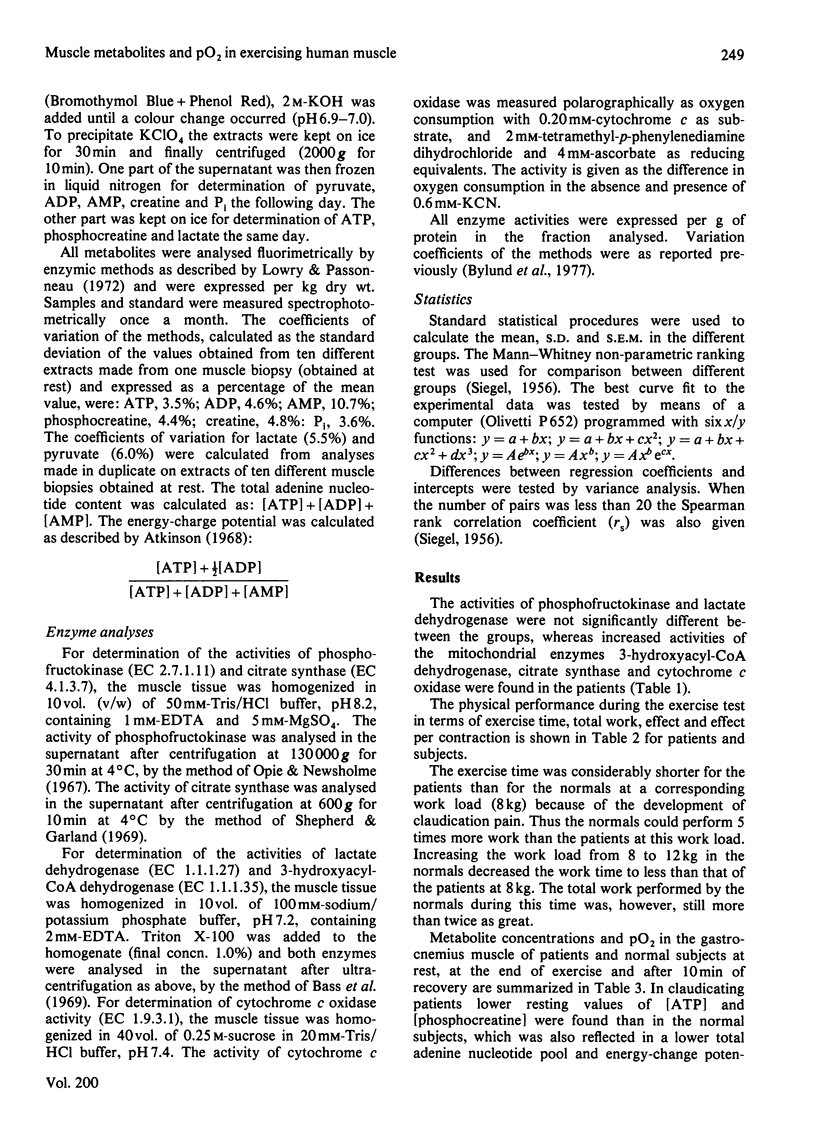
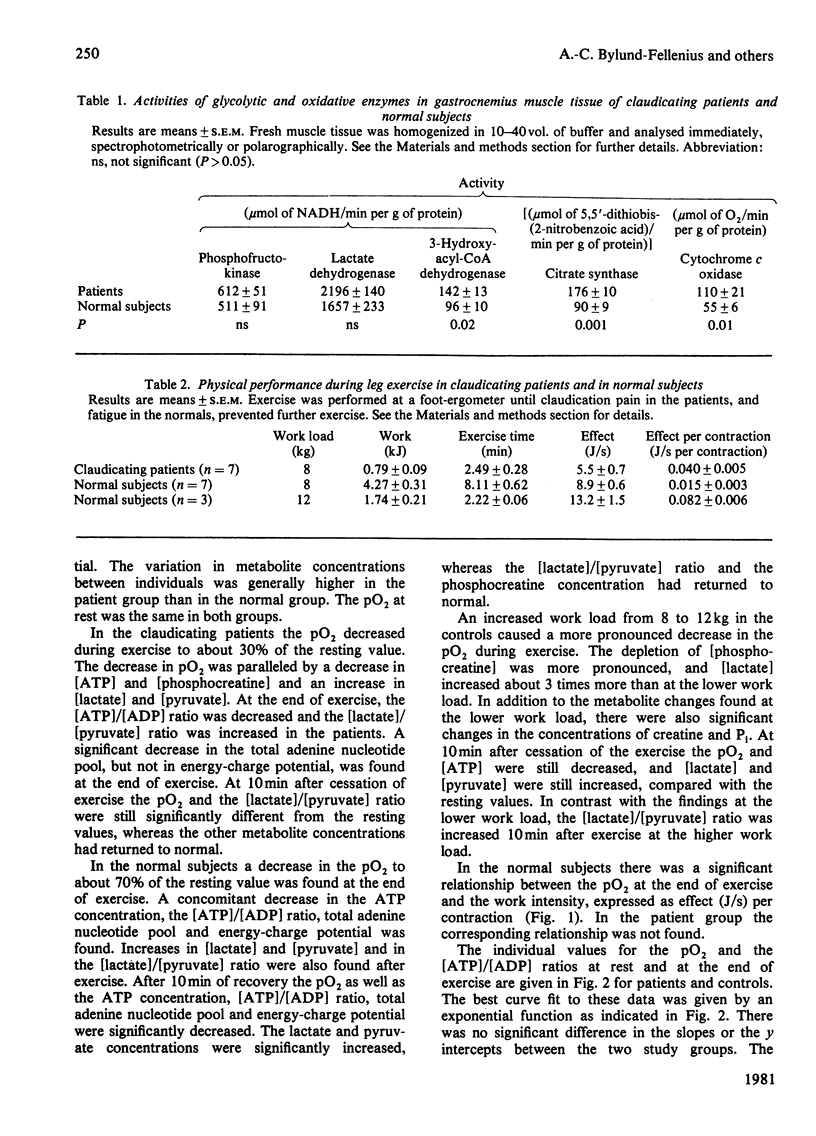
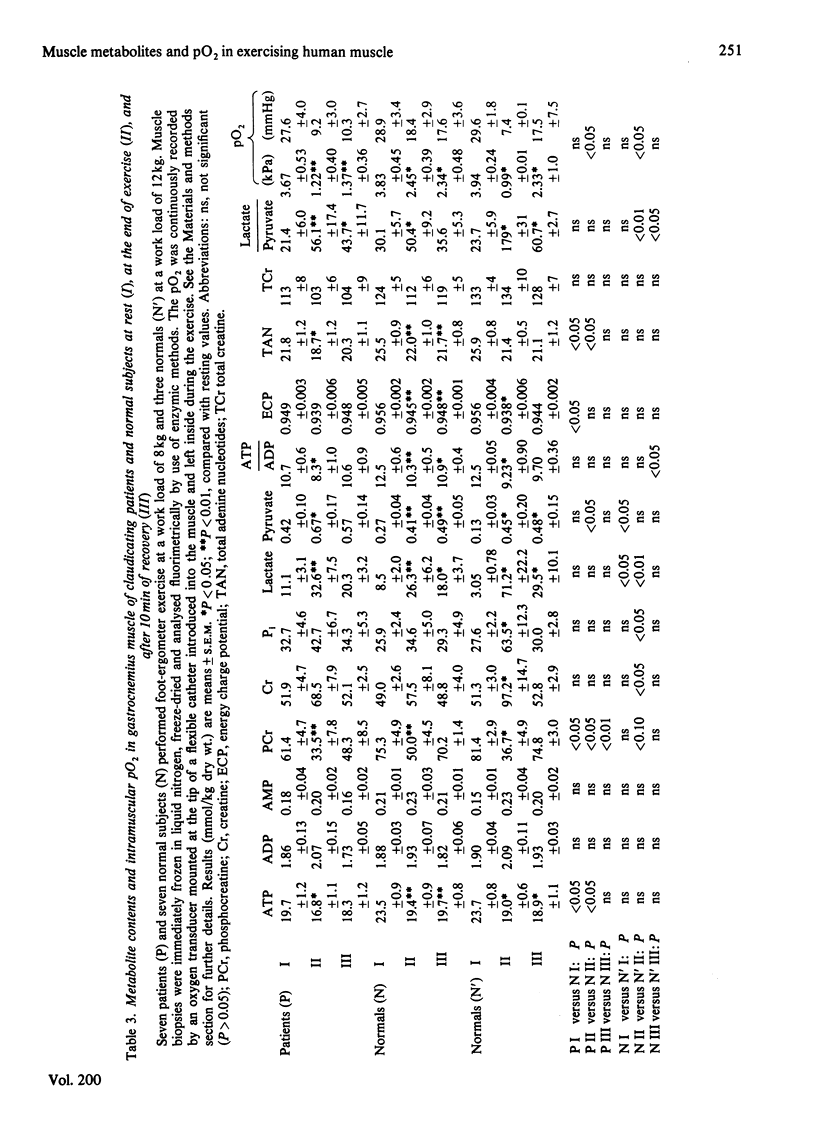
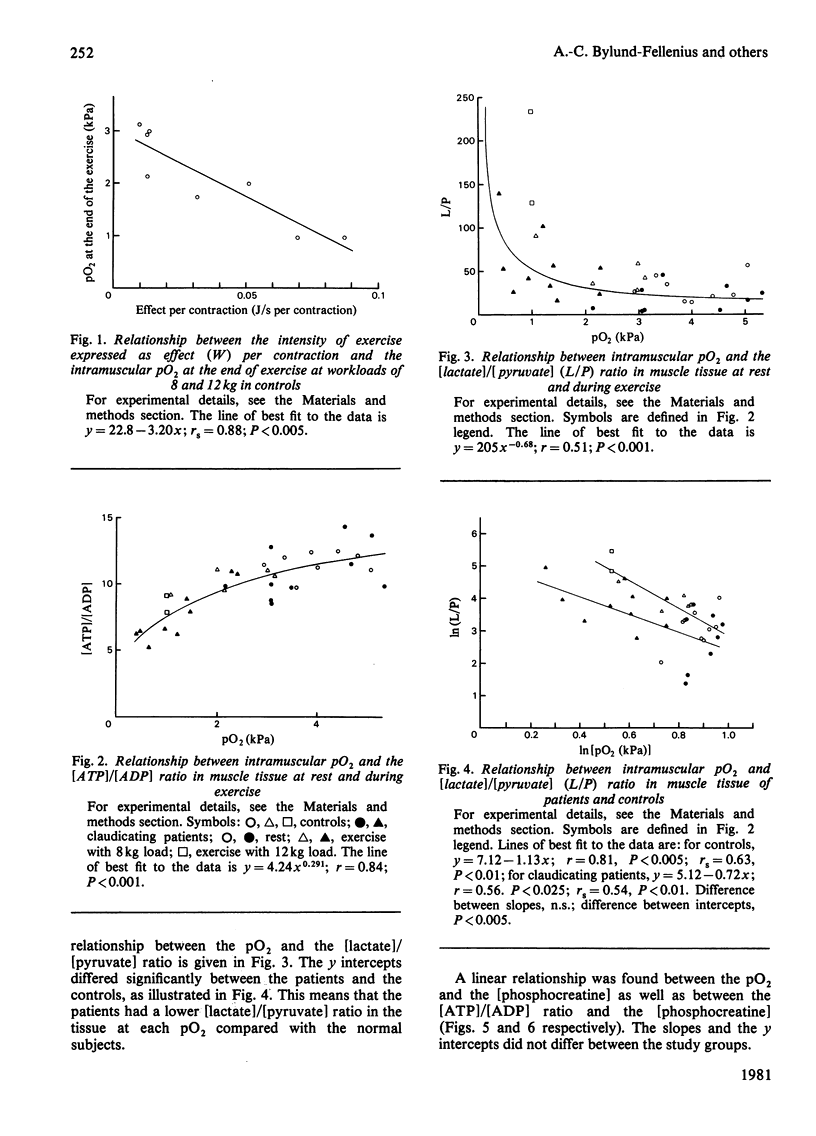
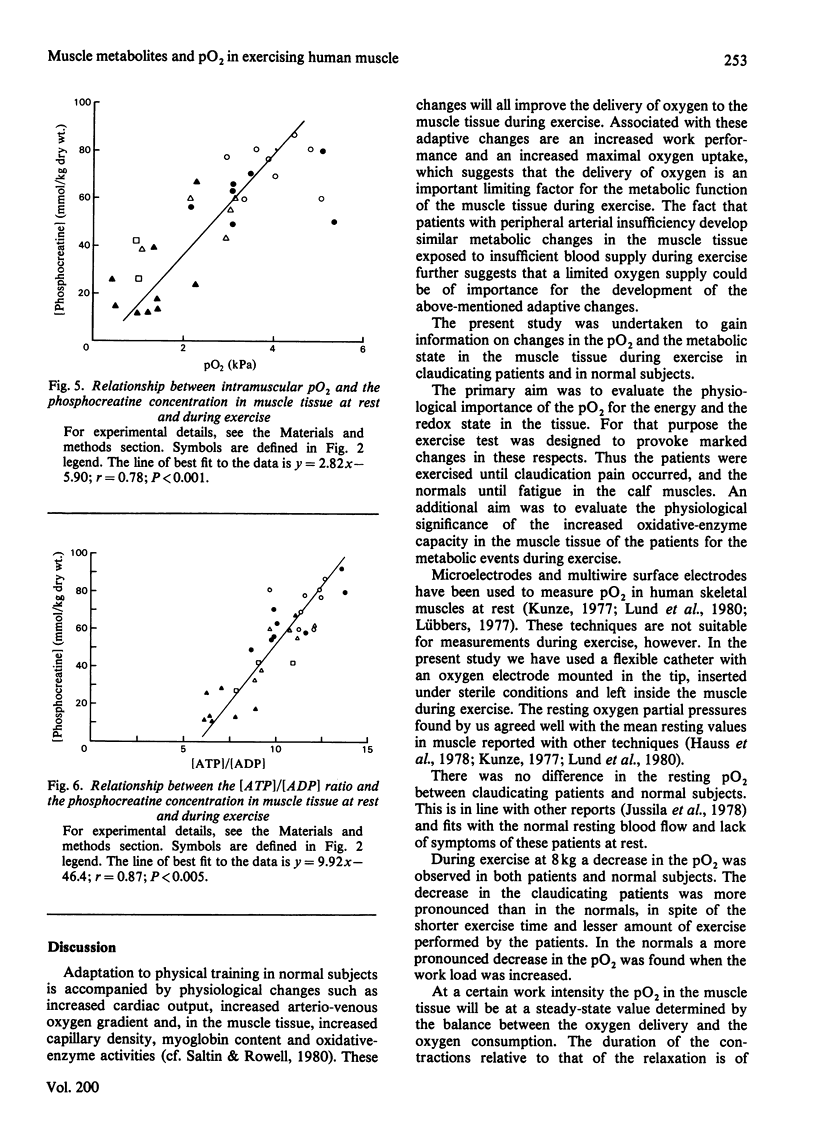
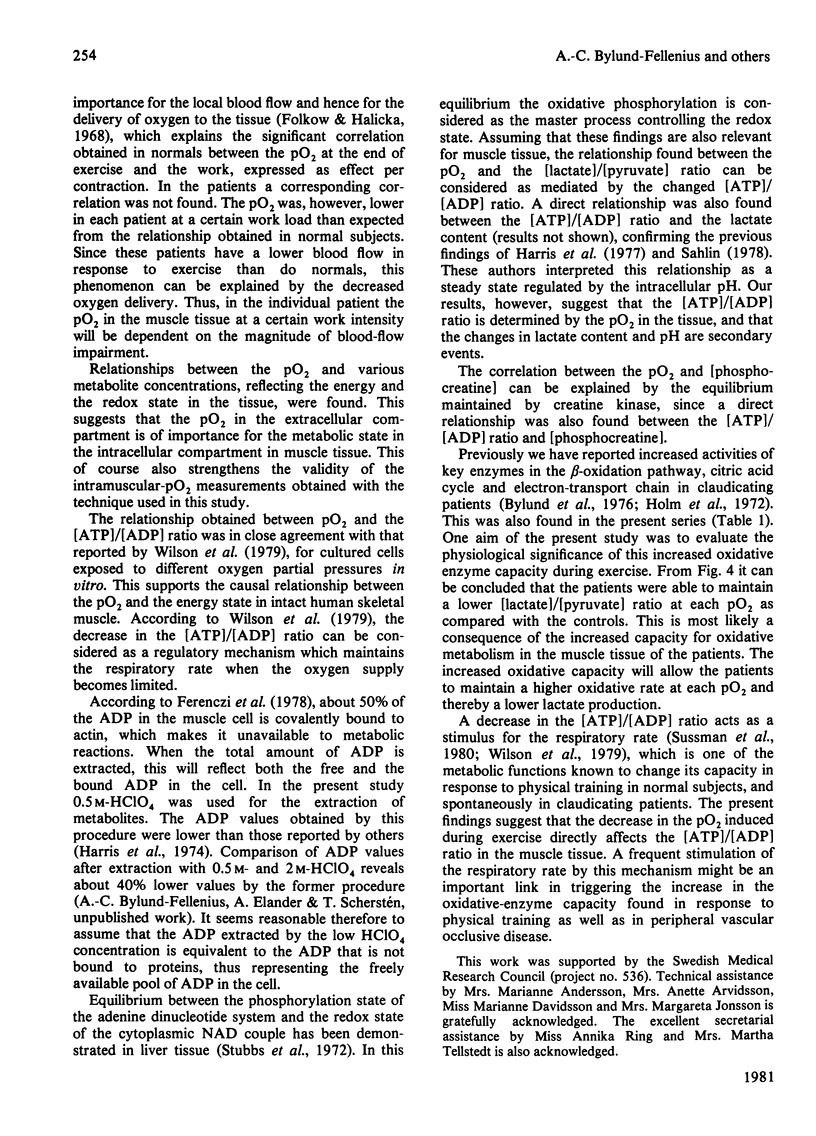
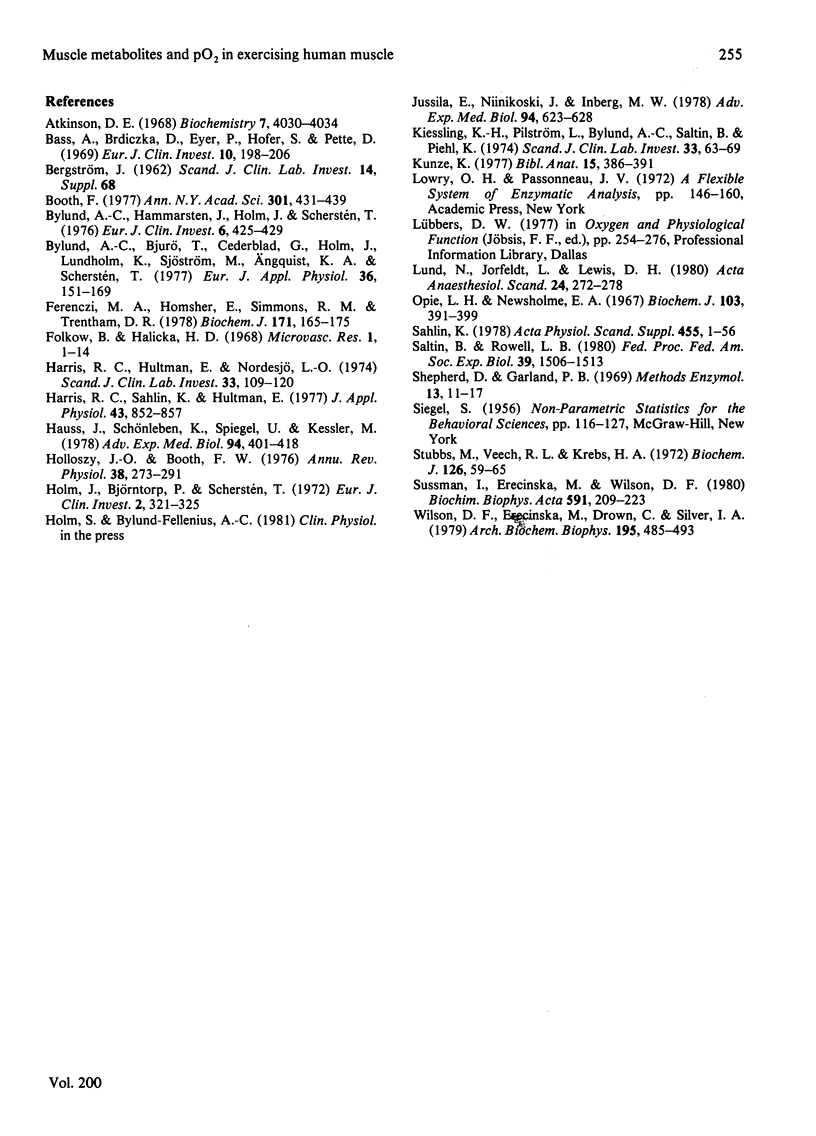
Selected References
These references are in PubMed. This may not be the complete list of references from this article.
- Atkinson D. E. The energy charge of the adenylate pool as a regulatory parameter. Interaction with feedback modifiers. Biochemistry. 1968 Nov;7(11):4030–4034. doi: 10.1021/bi00851a033. [DOI] [PubMed] [Google Scholar]
- Bass A., Brdiczka D., Eyer P., Hofer S., Pette D. Metabolic differentiation of distinct muscle types at the level of enzymatic organization. Eur J Biochem. 1969 Sep;10(2):198–206. doi: 10.1111/j.1432-1033.1969.tb00674.x. [DOI] [PubMed] [Google Scholar]
- Booth F. Effects of endurance exercise on cytochrome C turnover in skeletal muscle. Ann N Y Acad Sci. 1977;301:431–439. doi: 10.1111/j.1749-6632.1977.tb38219.x. [DOI] [PubMed] [Google Scholar]
- Bylund A. C., Bjurö T., Cederblad G., Holm J., Lundholm K., Sjöstroöm M., Angquist K. A., Scherstén T. Physical training in man. Skeletal muscle metabolism in relation to muscle morphology and running ability. Eur J Appl Physiol Occup Physiol. 1977 Mar 15;36(3):151–169. doi: 10.1007/BF00421747. [DOI] [PubMed] [Google Scholar]
- Bylund A. C., Hammarsten J., Holm J., Scherstén T. Enzyme activities in skeletal muscles from patients with peripheral arterial insufficiency. Eur J Clin Invest. 1976 Nov 30;6(6):425–429. doi: 10.1111/j.1365-2362.1976.tb00538.x. [DOI] [PubMed] [Google Scholar]
- Ferenczi M. A., Homsher E., Simmons R. M., Trentham D. R. Reaction mechanism of the magnesium ion-dependent adenosine triphosphatase of frog muscle myosin and subfragment 1. Biochem J. 1978 Apr 1;171(1):165–175. doi: 10.1042/bj1710165. [DOI] [PMC free article] [PubMed] [Google Scholar]
- Harris R. C., Hultman E., Nordesjö L. O. Glycogen, glycolytic intermediates and high-energy phosphates determined in biopsy samples of musculus quadriceps femoris of man at rest. Methods and variance of values. Scand J Clin Lab Invest. 1974 Apr;33(2):109–120. [PubMed] [Google Scholar]
- Harris R. C., Sahlin K., Hultman E. Phosphagen and lactate contents of m. quadriceps femoris of man after exercise. J Appl Physiol Respir Environ Exerc Physiol. 1977 Nov;43(5):852–857. doi: 10.1152/jappl.1977.43.5.852. [DOI] [PubMed] [Google Scholar]
- Holloszy J. O., Booth F. W. Biochemical adaptations to endurance exercise in muscle. Annu Rev Physiol. 1976;38:273–291. doi: 10.1146/annurev.ph.38.030176.001421. [DOI] [PubMed] [Google Scholar]
- Holm J., Björntorp P., Scherstén T. Metabolic activity in human skeletal muscle. Effect of peripheral arterial insufficiency. Eur J Clin Invest. 1972 Aug;2(5):321–325. doi: 10.1111/j.1365-2362.1972.tb00657.x. [DOI] [PubMed] [Google Scholar]
- Jussila E., Niinikoski J., Inberg M. V. Oxygen and carbon dioxide tensions in the gastrocnemius muscles of patients with lower limb arterial ischaemia. Adv Exp Med Biol. 1977 Jul 4;94:623–628. doi: 10.1007/978-1-4684-8890-6_85. [DOI] [PubMed] [Google Scholar]
- Kiessling K. H., Pilström L., Bylund A. C., Saltin B., Piehl K. Enzyme activities and morphometry in skeletal muscle of middle-aged men after training. Scand J Clin Lab Invest. 1974 Feb;33(1):63–69. doi: 10.3109/00365517409114199. [DOI] [PubMed] [Google Scholar]
- Kunze K. Local oxygen pressure in human skeletal muscle and its relation to respiration. Bibl Anat. 1977;(15 Pt 1):386–391. [PubMed] [Google Scholar]
- Lund N., Jorfeldt L., Lewis D. H. Skeletal muscle oxygen pressure fields in healthy human volunteers. A study of the normal state and the effects of different arterial oxygen pressures. Acta Anaesthesiol Scand. 1980 Aug;24(4):272–278. doi: 10.1111/j.1399-6576.1980.tb01548.x. [DOI] [PubMed] [Google Scholar]
- Opie L. H., Newsholme E. A. The activities of fructose 1,6-diphosphatase, phosphofructokinase and phosphoenolpyruvate carboxykinase in white muscle and red muscle. Biochem J. 1967 May;103(2):391–399. doi: 10.1042/bj1030391. [DOI] [PMC free article] [PubMed] [Google Scholar]
- Sahlin K. Intracellular pH and energy metabolism in skeletal muscle of man. With special reference to exercise. Acta Physiol Scand Suppl. 1978;455:1–56. [PubMed] [Google Scholar]
- Saltin B., Rowell L. B. Functional adaptations to physical activity and inactivity. Fed Proc. 1980 Apr;39(5):1506–1513. [PubMed] [Google Scholar]
- Stubbs M., Veech R. L., Krebs H. A. Control of the redox state of the nicotinamide-adenine dinucleotide couple in rat liver cytoplasm. Biochem J. 1972 Jan;126(1):59–65. doi: 10.1042/bj1260059. [DOI] [PMC free article] [PubMed] [Google Scholar]
- Sussman I., Erecińska M., Wilson D. F. Regulation of cellular energy metabolism: the Crabtree effect. Biochim Biophys Acta. 1980 Jul 8;591(2):209–223. doi: 10.1016/0005-2728(80)90153-x. [DOI] [PubMed] [Google Scholar]
- Wilson D. F., Erecińska M., Drown C., Silver I. A. The oxygen dependence of cellular energy metabolism. Arch Biochem Biophys. 1979 Jul;195(2):485–493. doi: 10.1016/0003-9861(79)90375-8. [DOI] [PubMed] [Google Scholar]


